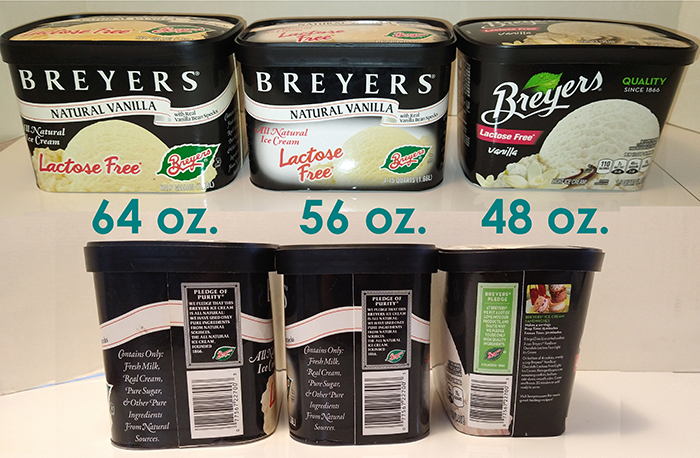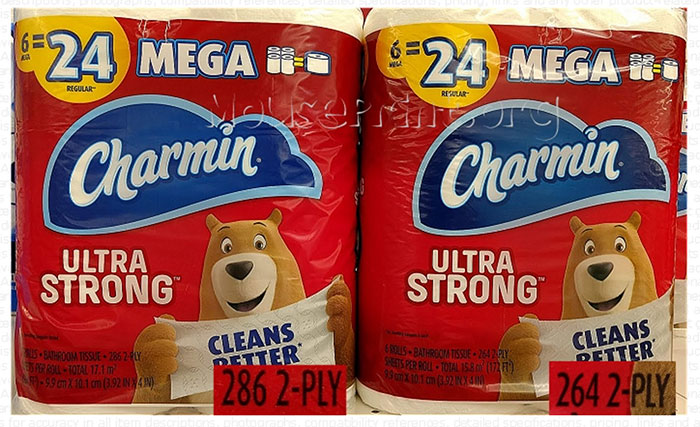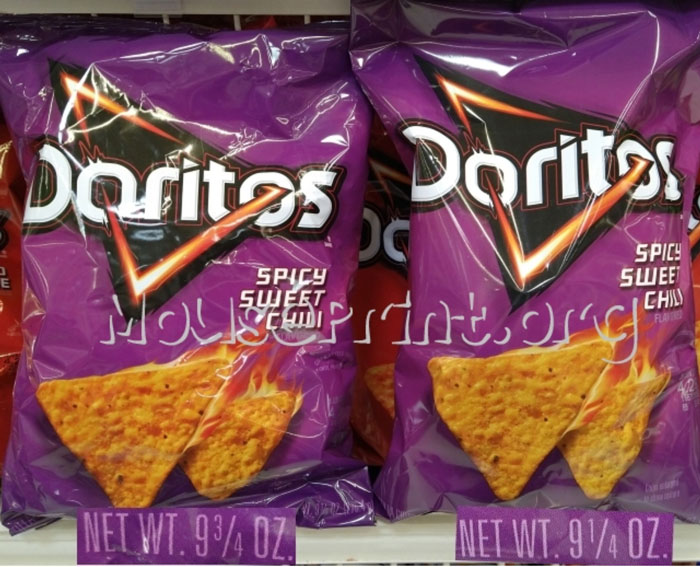Downsizing: A Sneaky Way to Raise Prices Without Upsetting Customers
Last updated June 7, 2021
Most shoppers know when the price of milk, eggs, or bread goes up. But many don’t notice when packaged goods are downsized ever so slightly.
This inconspicuous shrinkage—fewer sheets on a roll of toilet paper, skinnier paper towels, and less coffee in the can—has been going on for decades. And there’s no end in sight.
Listen to audio highlights of the story below:
When production costs go up, manufacturers have three choices: Reformulate products using cheaper ingredients, raise prices, or downsize containers—keep prices the same, but give customers a little less for their money.
“Companies know consumers are price conscious,” said Edgar Dworsky, founder and publisher of ConsumerWorld.org. “So, if you raise the price of orange juice from $2.99 to $3.19 people are going to notice. But if you take some orange juice out of each container, and go from 59 ounces to 52 ounces, far fewer people will notice and get upset.”

Consumer World has followed the ever-shrinking half-gallon container of Breyers ice cream as it’s been downsized over the years. In the store, shoppers rarely get to make such side-by-side comparisons.
A Few Examples
“This shrinkflation,” Dworsky said, “is just a sneaky way to raise prices.” He’s been warning people about the practice for more than 25 years, and recently published some new examples on his MousePrint blog, including:

Rolls of Charmin Ultra Strong now have 264 sheets, down from 286 sheets.

The net weight of a bag of Spicy Sweet Chili Doritos recently dropped from 9-3/4 ounces to 9-1/4 ounces. The company makes it “very hard to detect changes in content because the net weight statement is on the very bottom of the bag, often folded under when stocked on store shelves,” Dworsky noted.
Tricks of the Trade
Package designers use various tricks to disguise shrinkage. They can taper the box, so it looks the same on the shelf, but holds less cereal or crackers. Concave bottoms, as are common on peanut butter jars, can fill space where the product used to go. Coffee can be fluffed so fewer grounds fill the same-sized can.
“Shoppers, for the most part, are not net weight conscious,” Dworsky told Checkbook. “They don't memorize the net weight, and they don't check it every time they buy an item to make sure it hasn't changed. If the package looks like it always did, and the price stays the same, they will assume nothing is different.”
Don’t assume you know how much is in a package or that similar packages from different food companies contain the same amount—you need to check. You’d be hard-pressed to find a 16-ounce can of coffee that actually contains 16 ounces of coffee. Look for the net weight to see how much is inside.
Is There Anything You Can Do?
If a popular product is downsized and you’re willing to switch brands, check the competition. It may take some time for them to follow the leader. Or consider the store brand. It’s probably cheaper, the quality is often equal to or better than some brand name products, and it will be the last to be downsized.
If one of your favorite products gets downsized, write the manufacturer and complain. At the very least, you may get some coupons for your trouble.
Sometimes, if enough people complain, a company will reverse course. Bimbo Bakeries (yes, that’s really the company’s name) recently made its Thomas’ English Muffins a smidge bigger. The standard six muffin package was upsized from 12 to 13 ounces. When Dworsky asked the company why this was done, he was told it was a business decision “in part because they were getting feedback that the muffins were too small.”
Consider this advice from a Mouse Print reader who commented on Consumer World’s latest downsizing report: “Never go shopping without a calculator and a magnifying glass.”
Contributing editor Herb Weisbaum (“The ConsumerMan”) is an Emmy award-winning broadcaster and one of America's top consumer experts. He is also the consumer reporter for KOMO radio in Seattle. You can also find him on Facebook, Twitter, and at ConsumerMan.com.


